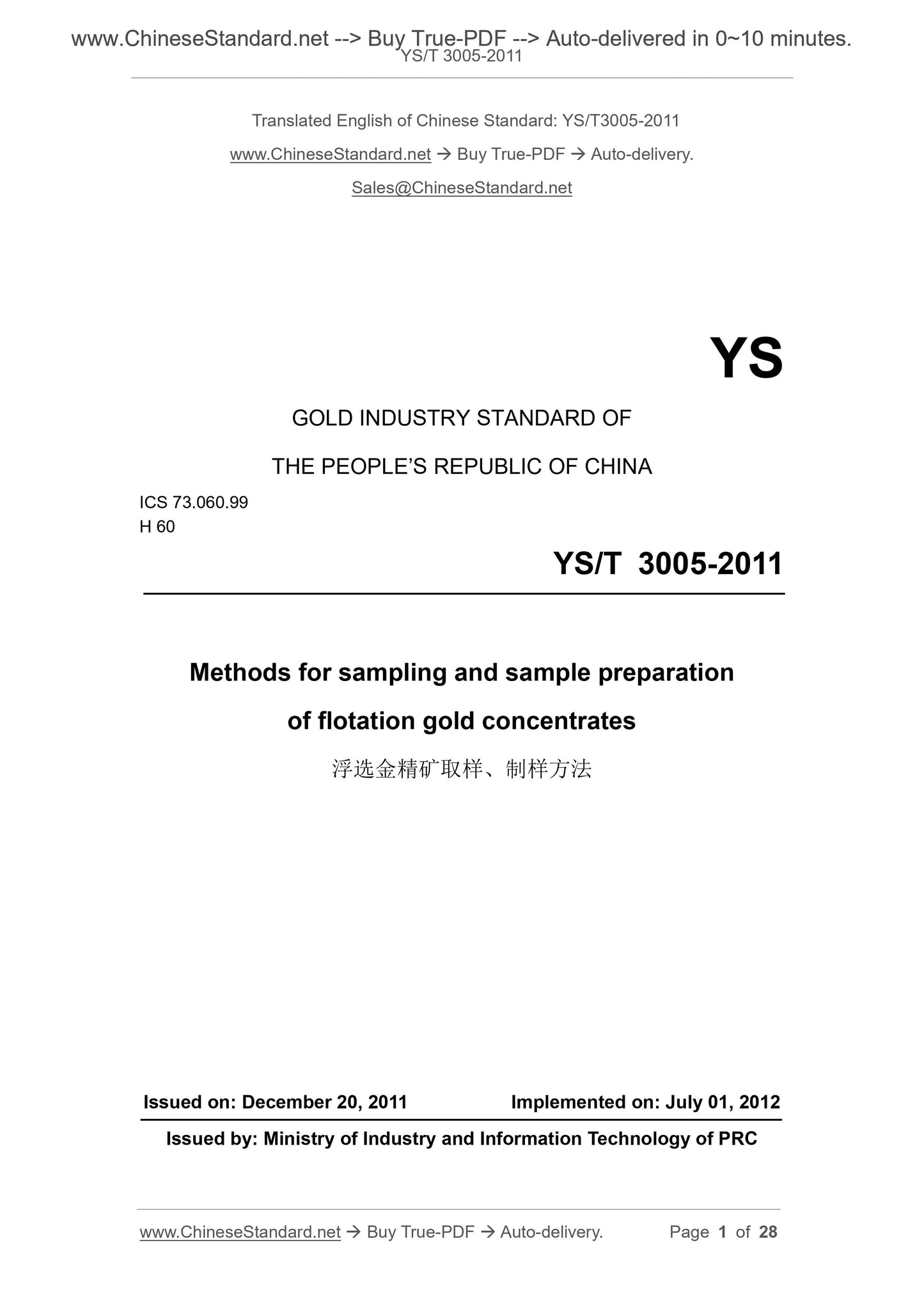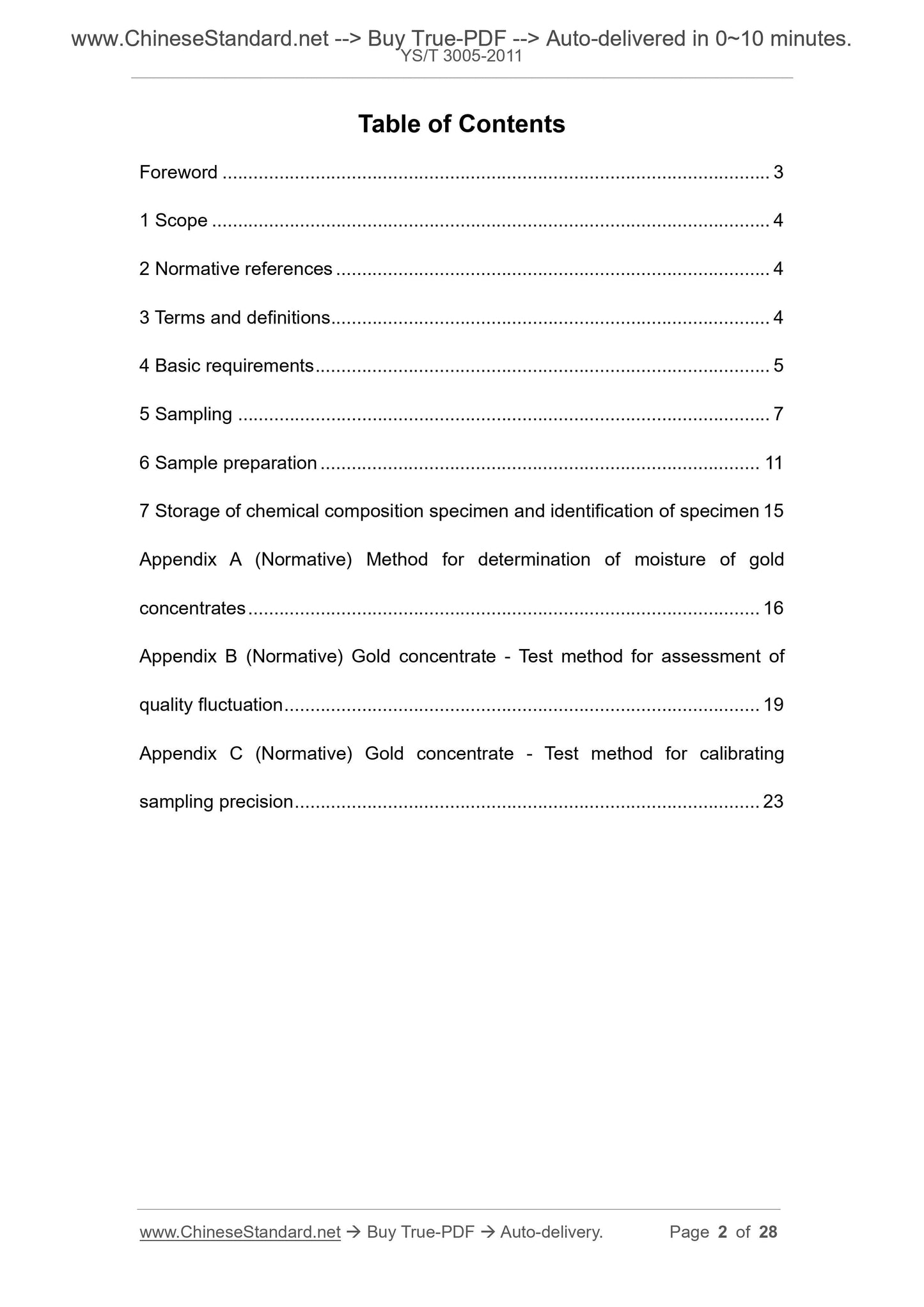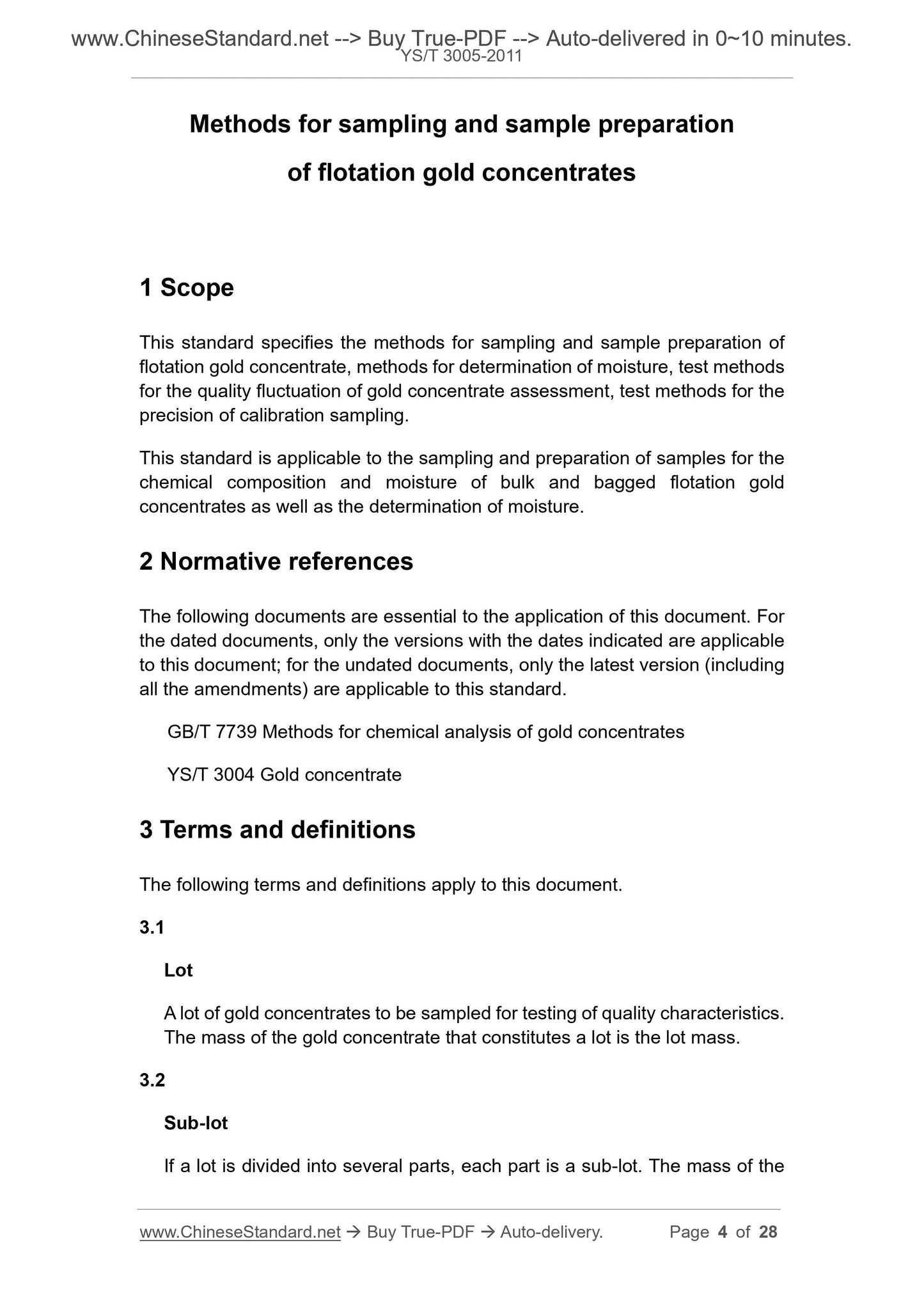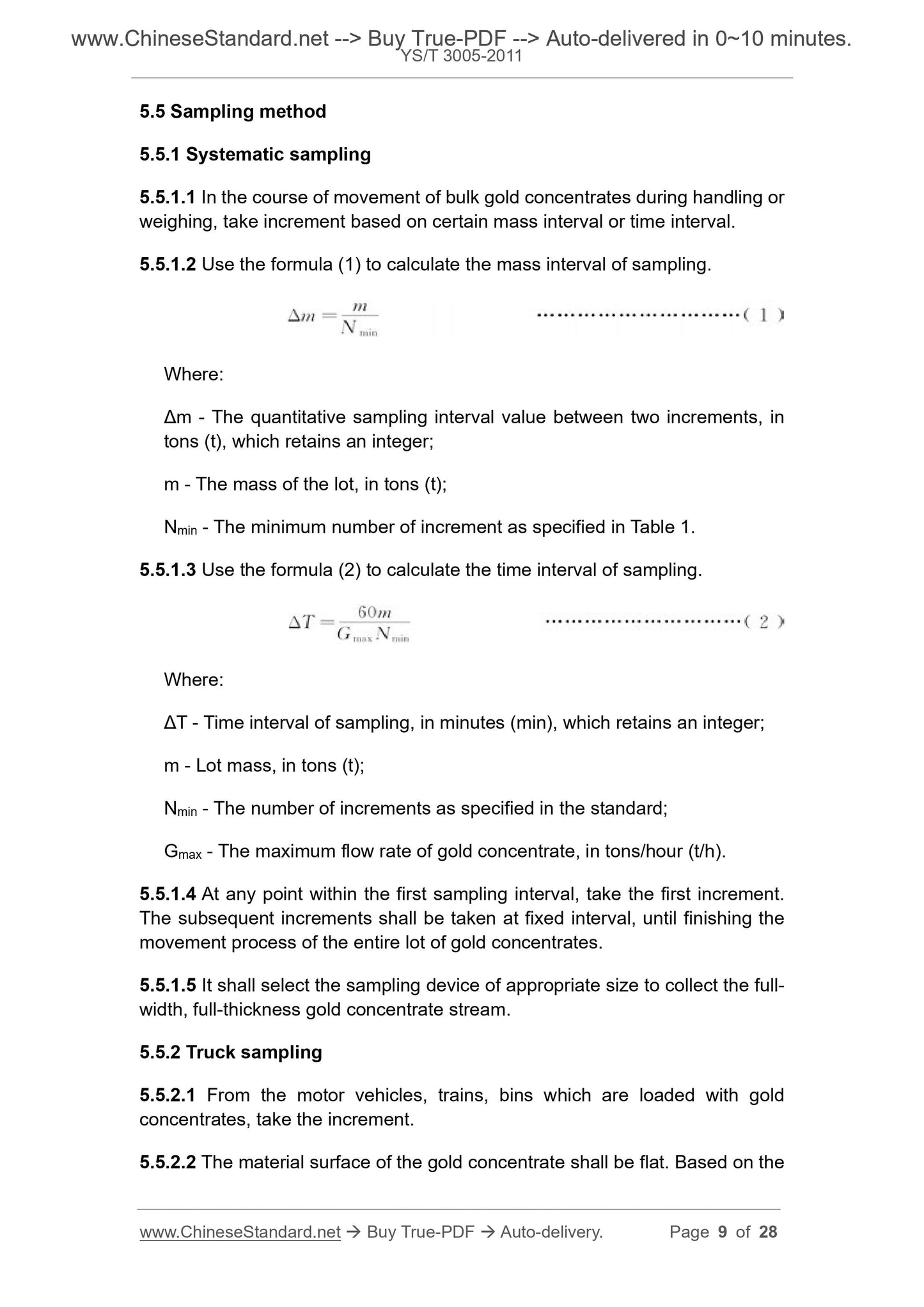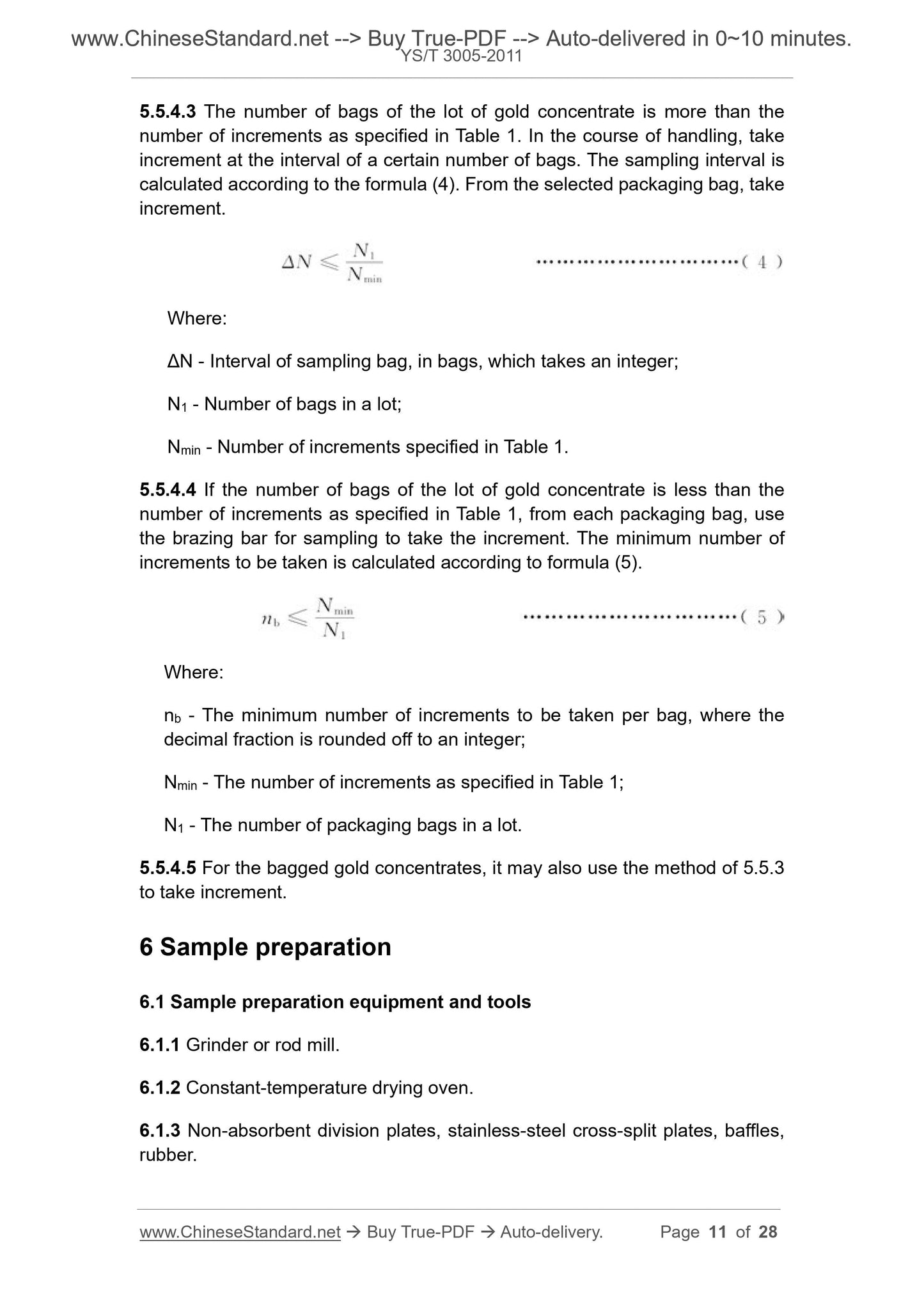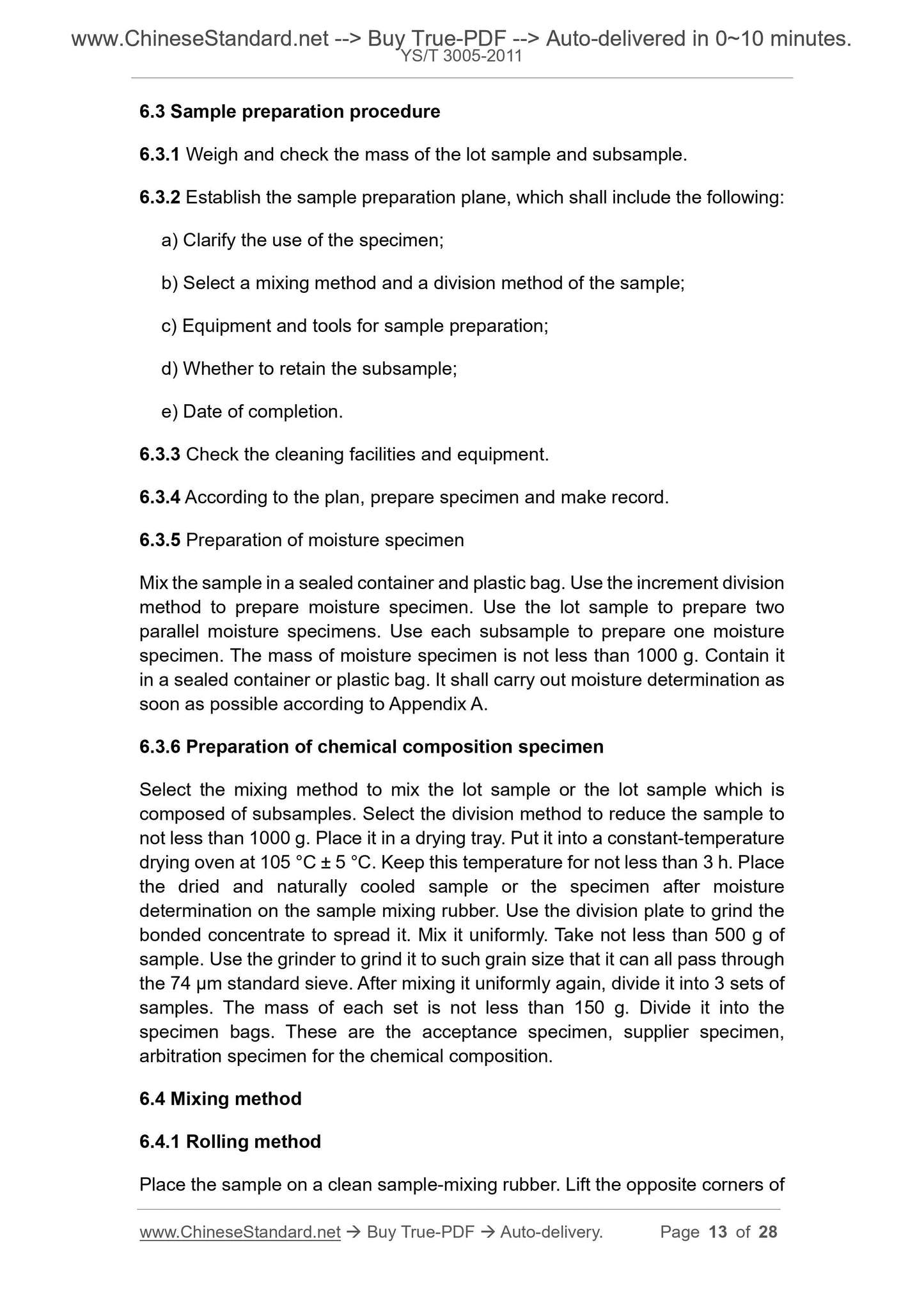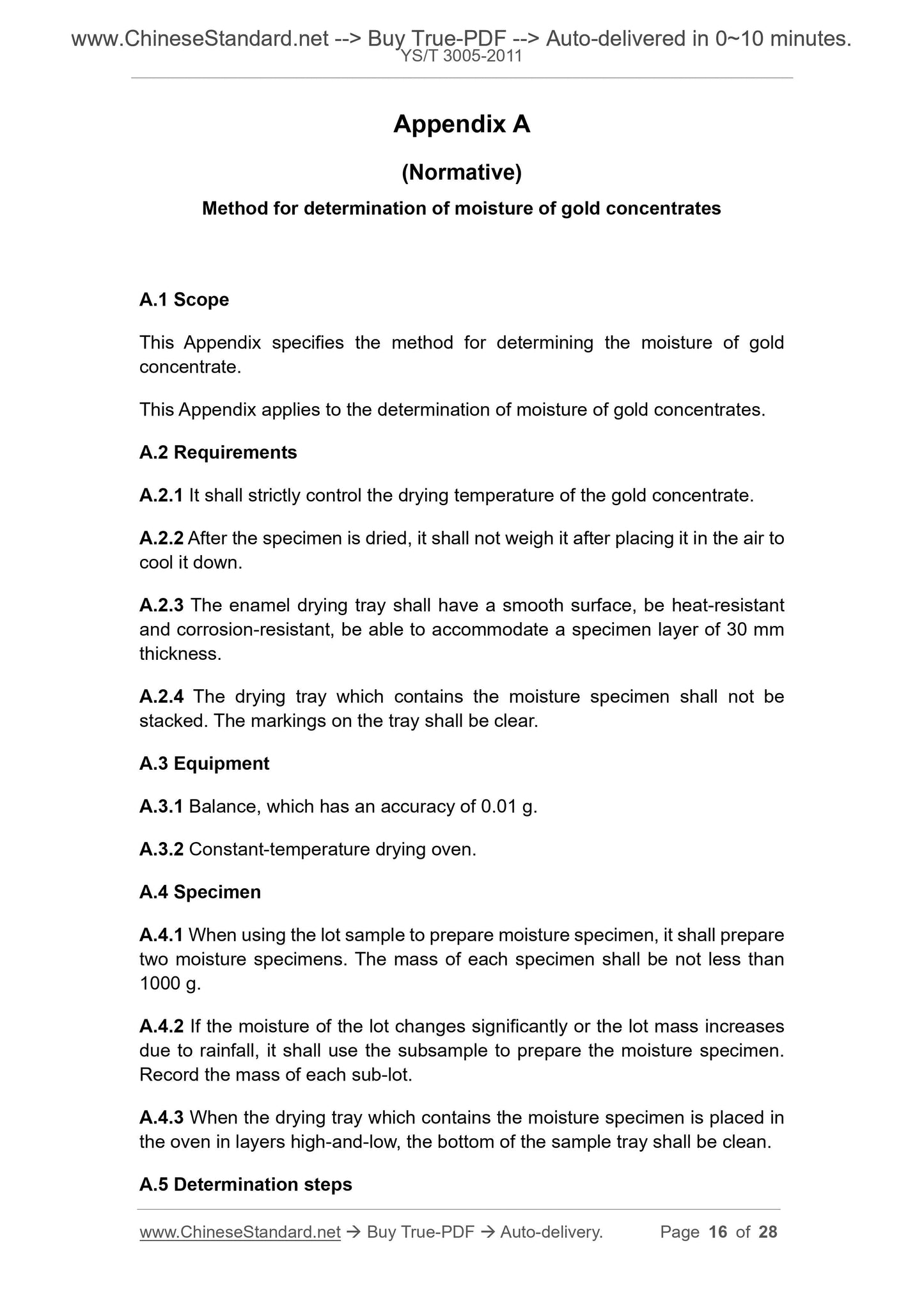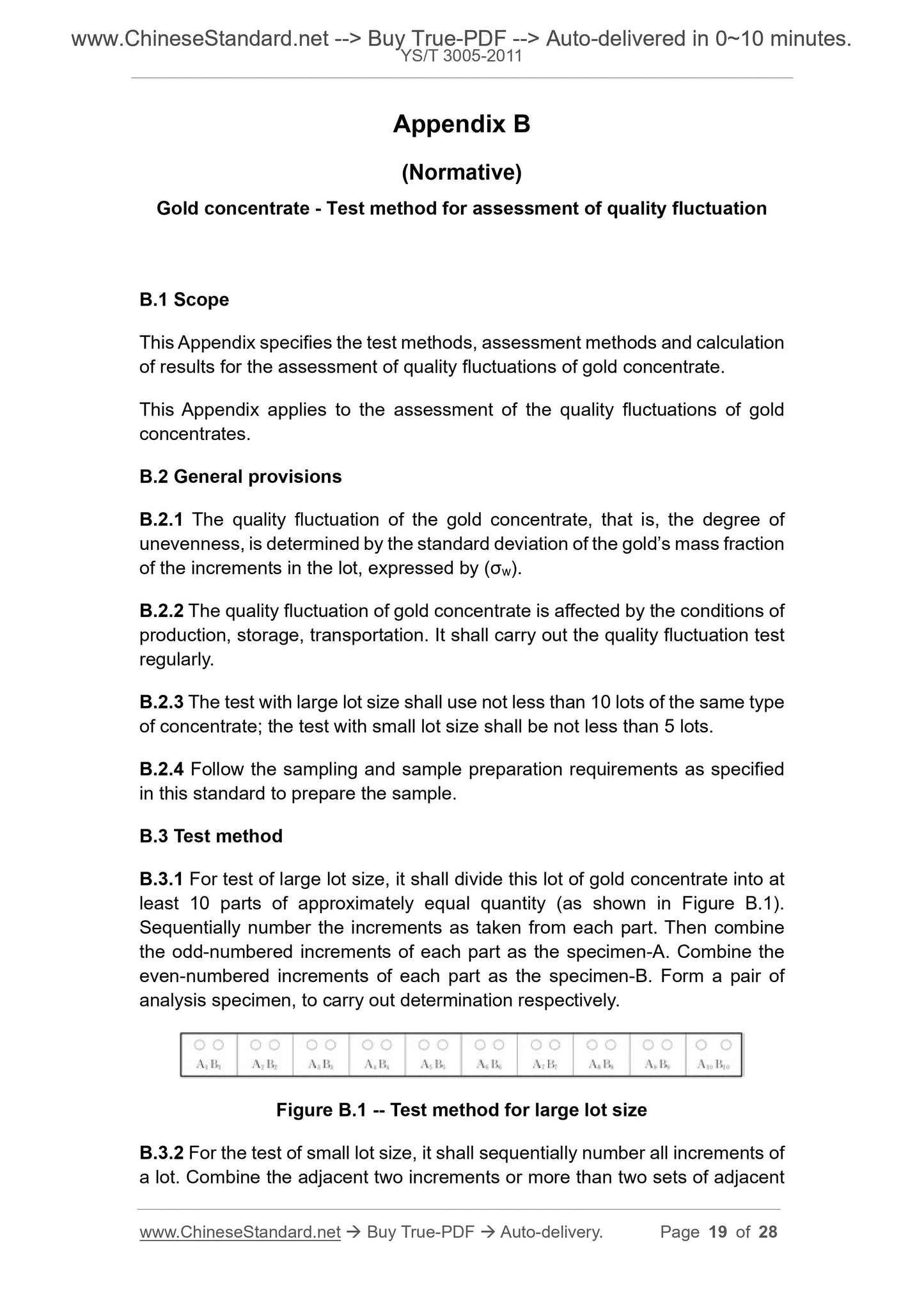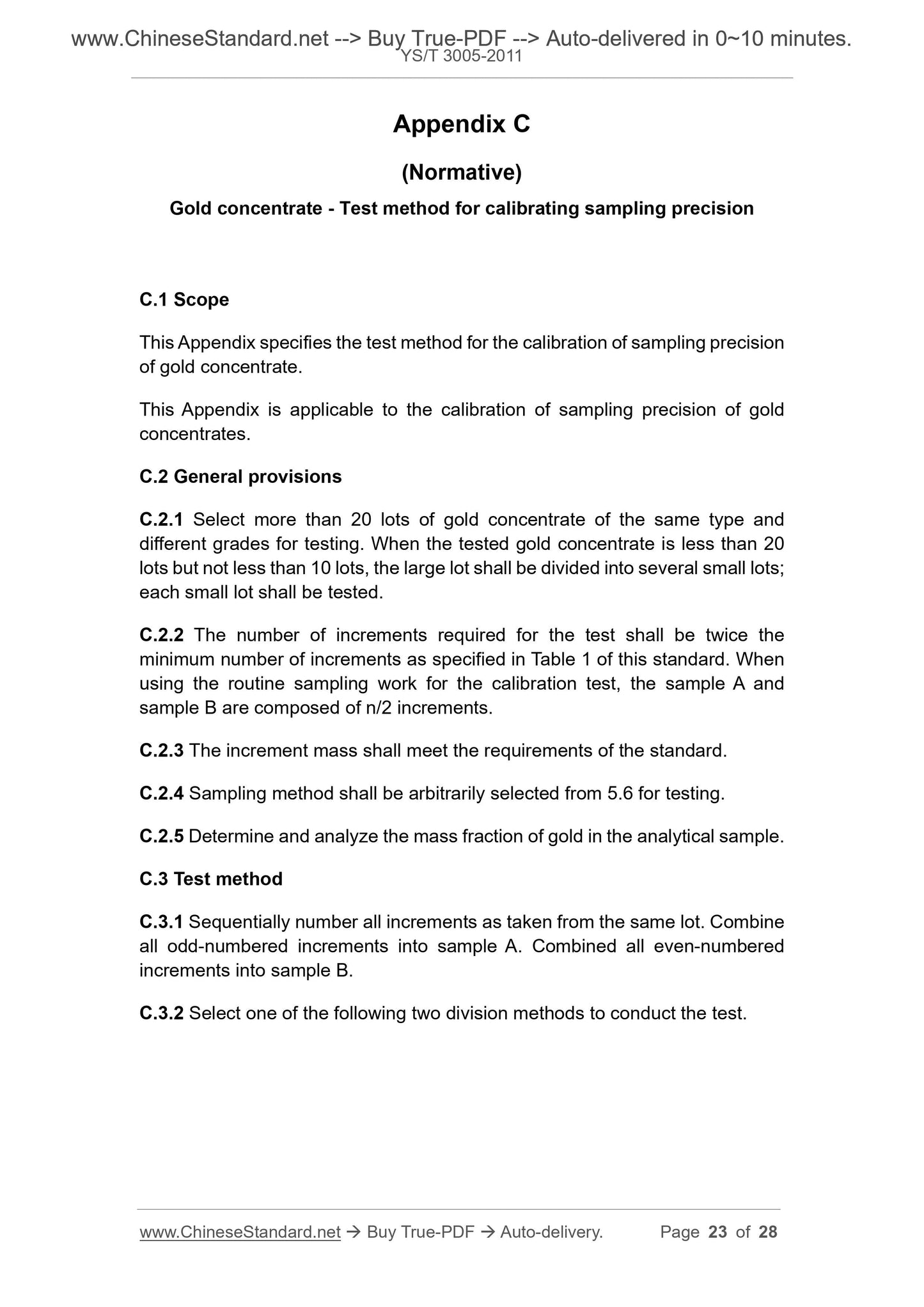1
/
of
9
www.ChineseStandard.us -- Field Test Asia Pte. Ltd.
YS/T 3005-2011 English PDF (YS/T3005-2011)
YS/T 3005-2011 English PDF (YS/T3005-2011)
Regular price
$150.00
Regular price
Sale price
$150.00
Unit price
/
per
Shipping calculated at checkout.
Couldn't load pickup availability
YS/T 3005-2011: Methods for sampling and sample preparation of flotation gold concentrates
Delivery: 9 seconds. Download (and Email) true-PDF + Invoice.Get Quotation: Click YS/T 3005-2011 (Self-service in 1-minute)
Newer / historical versions: YS/T 3005-2011
Preview True-PDF
Scope
This standard specifies the methods for sampling and sample preparation offlotation gold concentrate, methods for determination of moisture, test methods
for the quality fluctuation of gold concentrate assessment, test methods for the
precision of calibration sampling.
This standard is applicable to the sampling and preparation of samples for the
chemical composition and moisture of bulk and bagged flotation gold
concentrates as well as the determination of moisture.
Basic Data
| Standard ID | YS/T 3005-2011 (YS/T3005-2011) |
| Description (Translated English) | Methods for sampling and sample preparation of flotation gold concentrates |
| Sector / Industry | Nonferrous Metallurgy Industry Standard (Recommended) |
| Classification of Chinese Standard | H60 |
| Classification of International Standard | 73.060.99 |
| Word Count Estimation | 18,187 |
| Date of Issue | 2011-12-20 |
| Date of Implementation | 2012-07-01 |
| Quoted Standard | GB/T 7739; YS/T 3004 |
| Regulation (derived from) | ?MIIT Announcement 2011 No.43; Industry Standard Filing Announcement 2012 No.5 (Total No.149) |
| Issuing agency(ies) | Ministry of Industry and Information Technology |
| Summary | This standard specifies the flotation gold concentrate sampling, moisture determination method, , quality fluctuation test sample preparation methods and test methods for checking the precision of sampling gold concentrate assessment. This standard applies to bulk, take bagged gold flotation concentrate chemical composition and water samples, preparation and determination of moisture. |
Share
